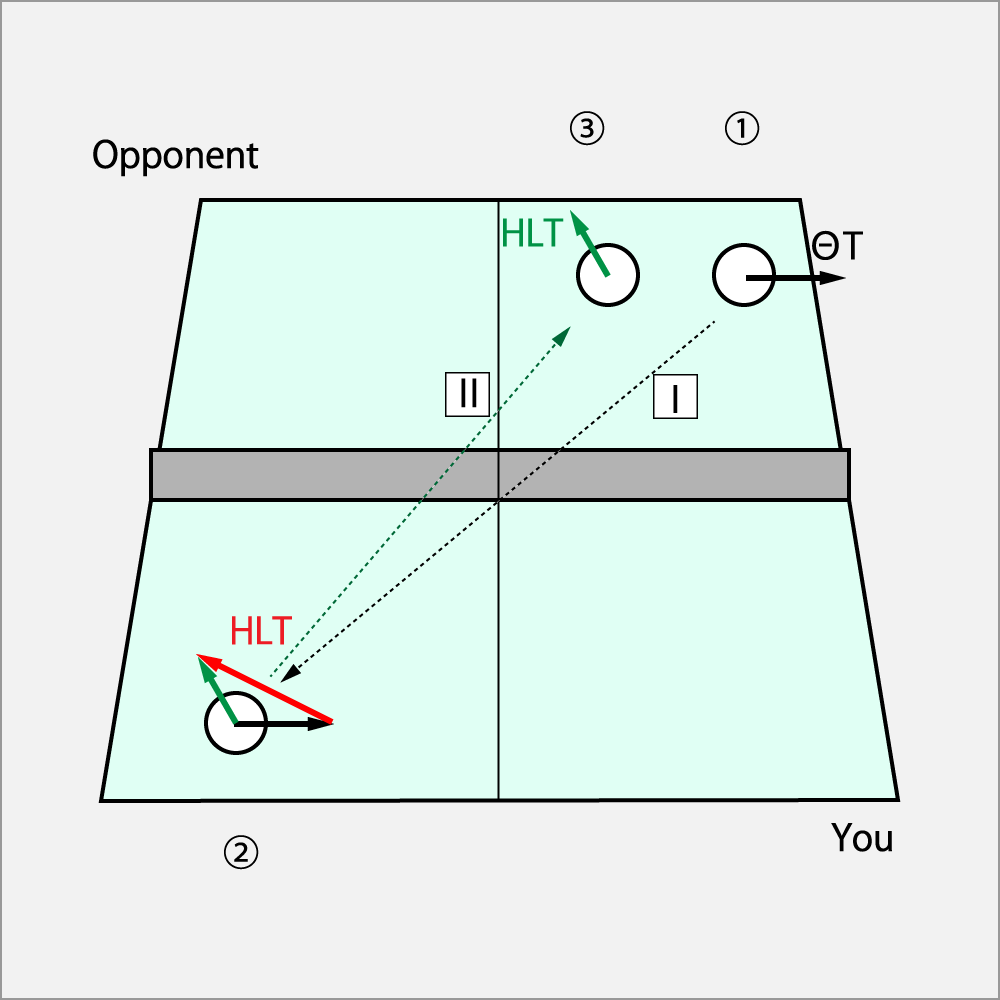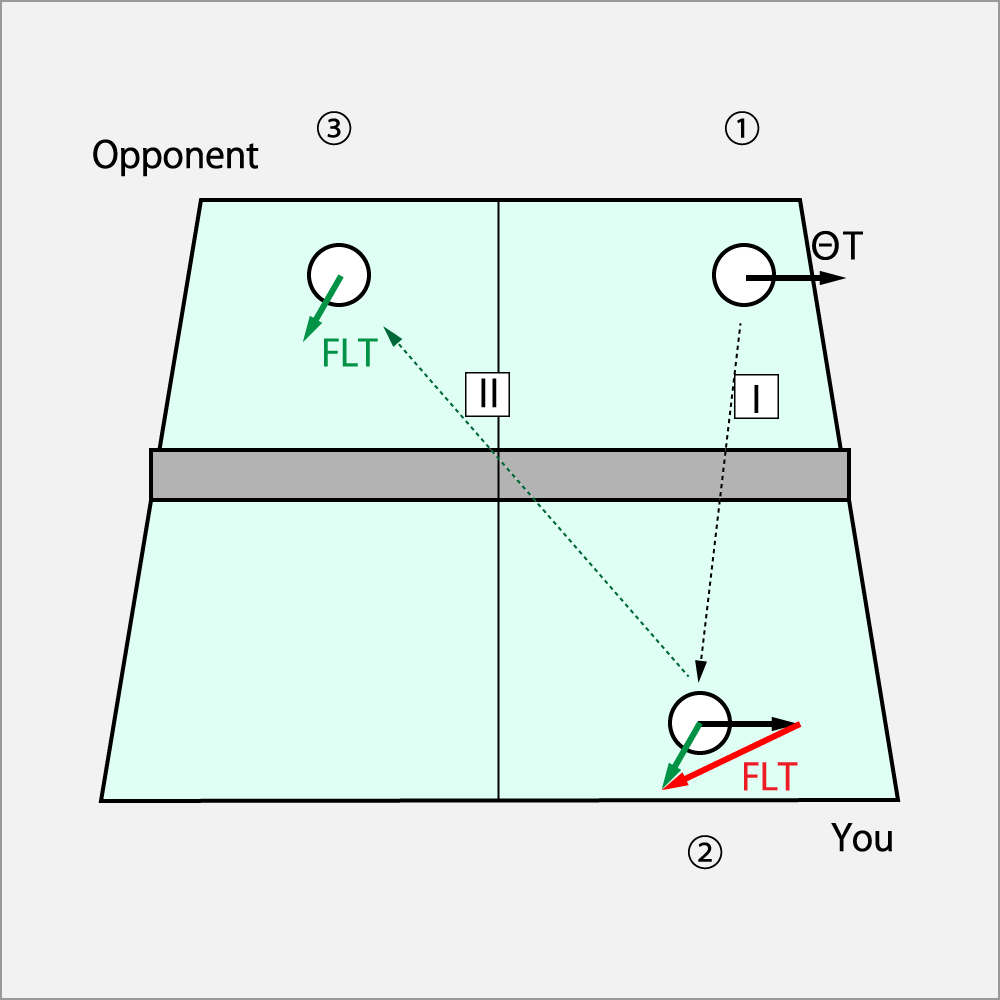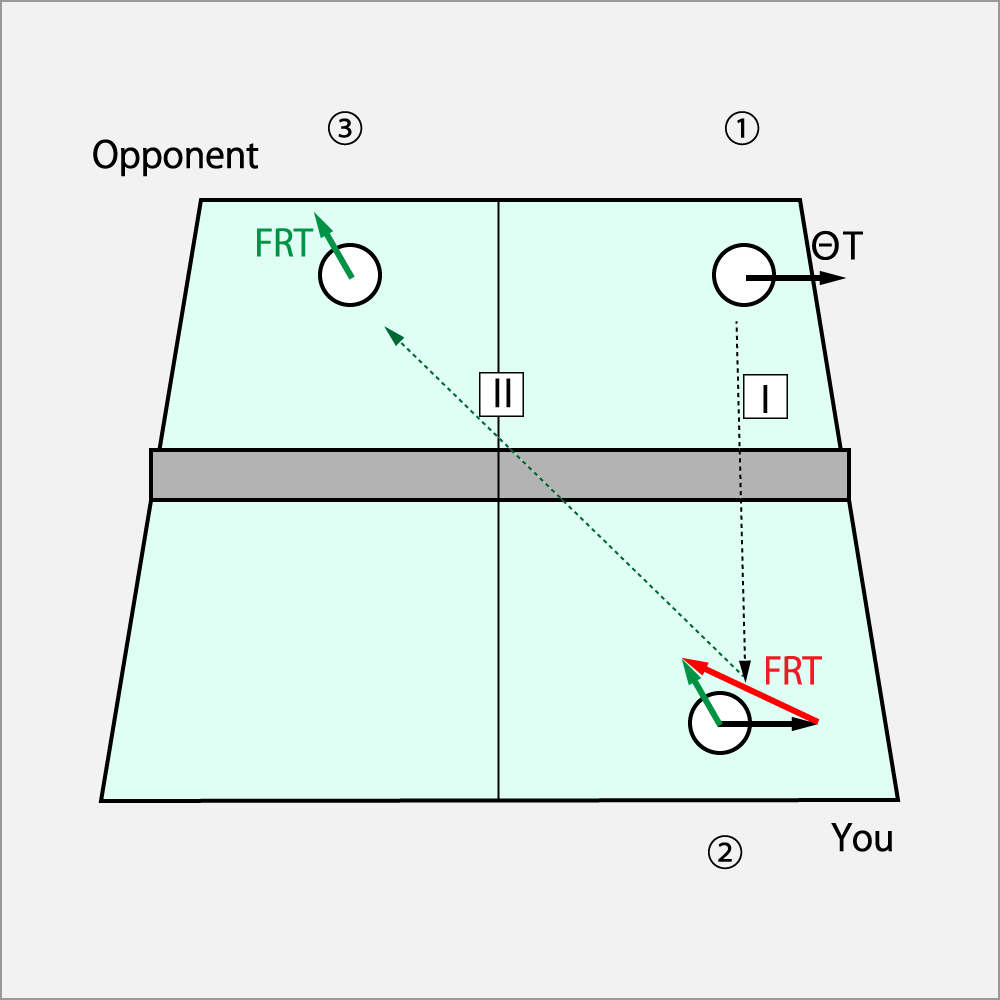Part 2. Think Tactics acoording to Vectors
2.8. Counterattack the Drive with Drive-based Spin
We already talked about how to block against Drive, however we want to acquire other Drive techniques exceeding the opponent Drive that are useful on actual games.
Here, we explain the technique to fight back using Drive, even taking a little risk, against the opponent Drive.
It is difficult for unskilled players to compete by own Drive against the opponent's one.
However, there is a counterattack measures which has the stability and aggression, you can change to other Drive spin if you can add another Drive to the Drive with avoiding fast spin region at the hitting point.
This tactics is the counterattack using the spin of Hcork or Fcork, Curve or Shoot, and Drive.
Of course, these techniques are wide counterattack measures which can also be used to services and rallies.
The following figure shows a 3D spin added to the ball. It is difficult to draw 3D spins on the 2D figure, and more difficult to image the spin from the figures. So, I want you to understand the spin with the English initials.
2.8.1. The counterattack with Hcork⋅Shoot⋅Drive against the opponent Drive

① The opponent has returned the ball with ΘDrive (ΘT).
② You add the Hcork⋅Shoot⋅Drive (HLT) which is stronger than the spin came into your court on the line Ⅰ.
③ The ball will return to the opponent court with Hcork⋅Shoot⋅Drive (HLT).
Equation is as follws.
Hcork⋅Shoot⋅Drive = ΘDrive + Hcork⋅Shoot⋅Drive
Let's express it in a little more detail and English initials.
HLT = ΘT + (H + L + T) = H + L + T (where T >ΘT)
The way of giving the spin is to turn the racket head to 45° front, left and top, giving the Drive by twisting the wrist quickly. it is necessary for suppressing the flight to add a Shoot.
2.8.2. The counterattack with Fcork⋅Shoot⋅Drive against the opponent Drive

① The opponent has return back with ΘDrive (ΘT).
② You add the Fcork⋅Shoot⋅Drive (FLT) which is stronger than the spin came into your court on the line Ⅰ.
③ The ball will return to the opponent court with Fcork⋅Shoot⋅Drive (FLT).
Equation is as follws.
Fcork⋅Shoot⋅Drive = ΘDrive + Fcork⋅Shoot⋅Drive
Let's express it in a little more detail and English initials.
FLT = ΘT + (F + L + T) = F + L + T (where T >ΘT)
The way of giving a spin is to catch the ball with the racket at the right front, the racket head directs to upwards, the spin is given with rubbing 45° of the ball's front by the racket.
2.8.3. The counterattack with Fcork⋅Curve⋅Drive against the opponent Drive

① The opponent has return back with ΘDrive (ΘT).
② You add the Fcork⋅Curve⋅Drive which is stronger than the spin came into your court on the line Ⅰ.
③ The ball will return to the opponent court with Fcork⋅Curve⋅Drive (FRT).
Equation is as follws.
Fcork⋅Curve⋅Drive = ΘDrive + Fcork⋅Curve⋅Drive
Let's express in a little more detail and English initials.
FRT = ΘT + (F + R + T) = F + R + T (where T >ΘT)
If the spin speed that you add to the ball was slow, the spin will become Curve, the ball will fly out from the coat.
So you have to give a strong spin to let fly to the direction of diagonal.
In general, the spin is given by using the right elbow and wrist, the Curve⋅Drive is given by twisting the elbow from the upper right as the swing down.
But any swing is acceptable as long as spin conditions are satisfied.